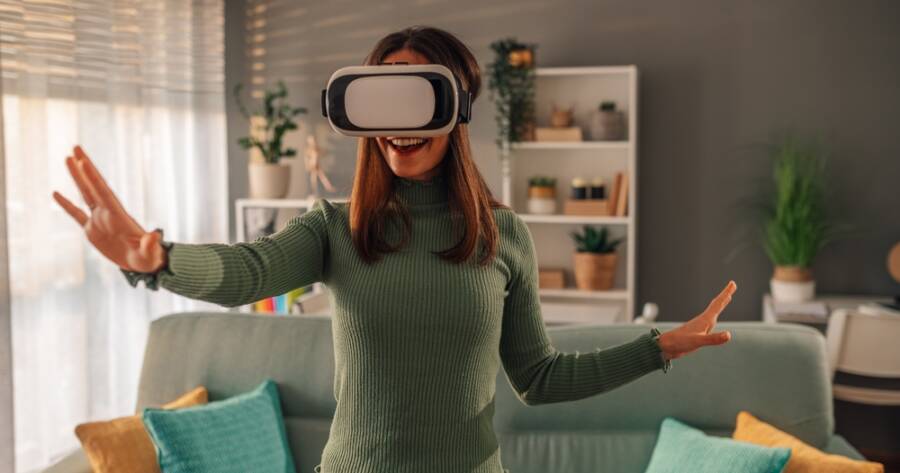Step into the future of digital immersion with our comprehensive guide to the virtual reality universe. Whether you’re a curious newcomer or a seasoned VR explorer, this article breaks down the best VR headsets, top-performing platforms, and the most exciting innovations just over the horizon. Discover how virtual reality is transforming entertainment, communication, and beyond—one headset at a time. Get ready to dive deep into a realm where imagination meets cutting-edge technology.
The Best VR Headsets in 2025
1. Meta Quest 3
Meta’s Quest 3 is a standout headset for its balance of performance and accessibility. As a wireless device, it provides freedom of movement, making it ideal for both casual users and more dedicated VR explorers. Enhanced displays and upgraded sensors improve clarity and interactivity. While its affordability is a strong selling point, users may want to explore its subscription-based ecosystem to unlock additional features.
2. Sony PlayStation VR2
For console gamers, the PlayStation VR2 is a top contender. This headset leverages the power of the PS5, offering stunning visuals, adaptive triggers, and haptic feedback. With titles like Horizon: Call of the Mountain leading its lineup, the PS VR2 immerses players in breathtaking environments. However, as it’s tethered to the console, it’s best suited for stationary use.
3. Valve Index
The Valve Index is renowned for its high-fidelity visuals and precise tracking. With a refresh rate up to 144Hz and a wide field of view, it offers an immersive experience for PC gamers seeking top-tier performance.
4. Apple Vision Pro
Apple’s Vision Pro offers an emphasis on augmented reality (AR), this device blends digital overlays with the physical world, offering a seamless transition between environments. Early adopters reported exceptional build quality and usability. However, its luxury pricing means it’s likely to appeal to developers and early adopters rather than mainstream consumers.
Exploring Popular VR Platforms
1. Meta Quest Platform (Meta Reality Labs)
Best for All-Around VR Experiences
Devices Supported: Meta Quest 2, Quest 3, Quest Pro, Quest 3S
Key Features:
- Vast content library with games, fitness, social apps, and productivity tools.
- Standalone capability—no PC or console required.
- Frequent updates and integration with Horizon Worlds (Meta’s metaverse initiative).
Strengths:
- Highly accessible and affordable.
- Strong developer support.
- Supports hand tracking and mixed reality passthrough on newer headsets.
2. SteamVR (Valve)
Best for PC VR and Enthusiasts
Devices Supported: Valve Index, HTC Vive series, Windows Mixed Reality headsets, Oculus Rift (legacy)
Key Features:
- Deep integration with the Steam gaming ecosystem.
- Access to a wide range of high-fidelity VR titles and experimental experiences.
- Highly customizable with mod support.
Strengths:
- Preferred by hardcore gamers and sim enthusiasts.
- Supports high-end PC hardware for superior visuals.
- Flexible platform for developers and tinkerers.
3. PlayStation VR Platform (Sony)
Best for Console-Based VR Gaming
Devices Supported: PlayStation VR2
Key Features:
- Built exclusively for PlayStation 5.
- Strong lineup of exclusive titles (e.g., Gran Turismo 7 VR, Resident Evil Village VR).
- High-end specs at a relatively low price for console owners.
Strengths:
- Delivers premium VR experiences without needing a PC.
- Immersive haptics and adaptive triggers via PSVR2 Sense controllers.
- Optimized performance for console gaming standards.
Upcoming VR Innovations to Watch
1. Eye-Tracking and Facial Recognition
Advanced eye-tracking technology is becoming more common in VR headsets, offering improved interactivity and accessibility. Devices with facial recognition features aim to enhance avatar expressions, creating more realistic and emotive digital personas. These tools could also open up new possibilities for therapy and communication applications.
2. Haptic Feedback Suits
Innovations like the SenseGlove and Roto VR Explorer chair are already pushing the boundaries of tactile feedback in VR. These devices provide users with physical sensations corresponding to virtual interactions, such as feeling the texture of objects or the motion of vehicles, thereby increasing immersion.
Full-body haptic suits are on the horizon, promising deeper sensory immersion. By simulating touch and pressure, these suits could revolutionize how users experience VR, especially in gaming and training scenarios. While still in development, such technology hints at a future where VR feels almost indistinguishable from reality.
3. AI-Driven Adaptive VR Environments
Artificial intelligence is increasingly integrated into VR platforms, enabling environments that adapt in real-time to user behavior and preferences. This fusion allows for personalized experiences in gaming, education, and professional training, enhancing engagement and effectiveness.
Practical Considerations for New Users
Comfort and Fit: When choosing a VR headset, comfort is key. Adjustable straps, lightweight designs, and proper ventilation are essential for extended use. Many headsets now offer multiple fitting options to accommodate various users.
Health and Safety: While VR can offer incredible experiences, it’s important to take precautions. Limit sessions to prevent eye strain and motion sickness. Ensure your play area is clear of obstacles to avoid accidents. If using VR for physical activity, consult a healthcare provider if you have any preexisting conditions.
A Whole New World
The VR landscape offers an exciting blend of innovation, accessibility, and creativity. With diverse headsets, platforms, and emerging technologies, there’s never been a better time to explore what VR has to offer.
However, as the industry evolves, staying informed about new developments and making mindful choices about hardware and applications will be crucial. Whether you’re diving into VR for entertainment, education, or productivity, the possibilities are as expansive as your imagination.
